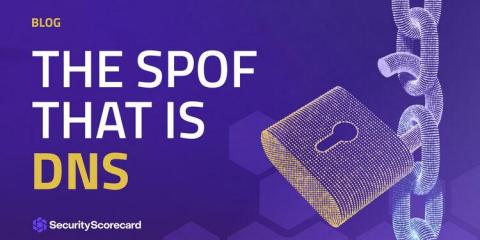Security | Threat Detection | Cyberattacks | DevSecOps | Compliance
Risk Management
SecurityScorecard releases list of Killnet open proxy IP addresses
In the wake of Killnet’s latest DDoS attack on U.S. hospitals on January 30, SecurityScorecard has made its KillNet open proxy IP blocklist available to the public. This list is the product of the SecurityScorecard Threat Research, Intelligence, Knowledge, and Engagement (STRIKE) Team’s ongoingresearchintoKillNet. We released this list to help organizations better defend themselves against KillNet and other groupslike it by preventing traffic from exploitable assets.
Ask A Ciso Series: Part 3 - How should CISOs prepare themselves for 2023 challenges?
Killnet: A new group exploiting an old problem
How geopolitics and hacktivism is causing trouble for the healthcare industry
Close Encounters of the Third- (and Fourth-) Party Kind: The Blog
With organizations becoming increasingly digitally connected, a lack of visibility into their vendors’ security diligence has made exploiting these relationships a go-to tactic for cybercriminals. So, what can organizations do to minimize risk stemming from their business ecosystems?
Ask a CISO Series: Part 2 - What are the top trends that will have a significant impact in 2023?
If you missed the first part of our series (What will be the top cybersecurity threats in 2023?) we highly recommend you go check it out here.
How to Manage Risk Effectively in Cloud-Native Environments
We’ve all got our heads in the cloud, or if not yet, we’re well on our way there. In other words, the process of digital transformation is happening at such a pace that almost all organizations will soon be working in the cloud and using cloud-native technology. Analyst Gartner has predicted that by 2025, over 95% of new digital workloads will be deployed on cloud-native platforms. This represents a 30% growth from 2021.
What's new in UpGuard // Cyber Vendor Risk Management Product Releases
The SPoF that is DNS
The idea behind “SPoF,” or “Single Point of Failure,” is that if one part of a system fails, then the entire system fails. It’s not desirable. In IT and security circles, if a system or application can be disrupted or degraded severely by the failure of just one component or subcomponent, then we usually deem the design to have a flaw.
Ask a CISO Series: Part 1 - What will be the top cybersecurity threats in 2023?
As we look towards 2023, it is important to gain insight from top cybersecurity experts on the emerging threats and trends in the field. In this interview series, we spoke with four leading CISOs in order to gain their perspective on the threats, trends, and their personal goals as CISOs in 2023. Meet our panel of distinguished CISOs who will impart their foresight and guidance on the future of cybersecurity in 2023.











